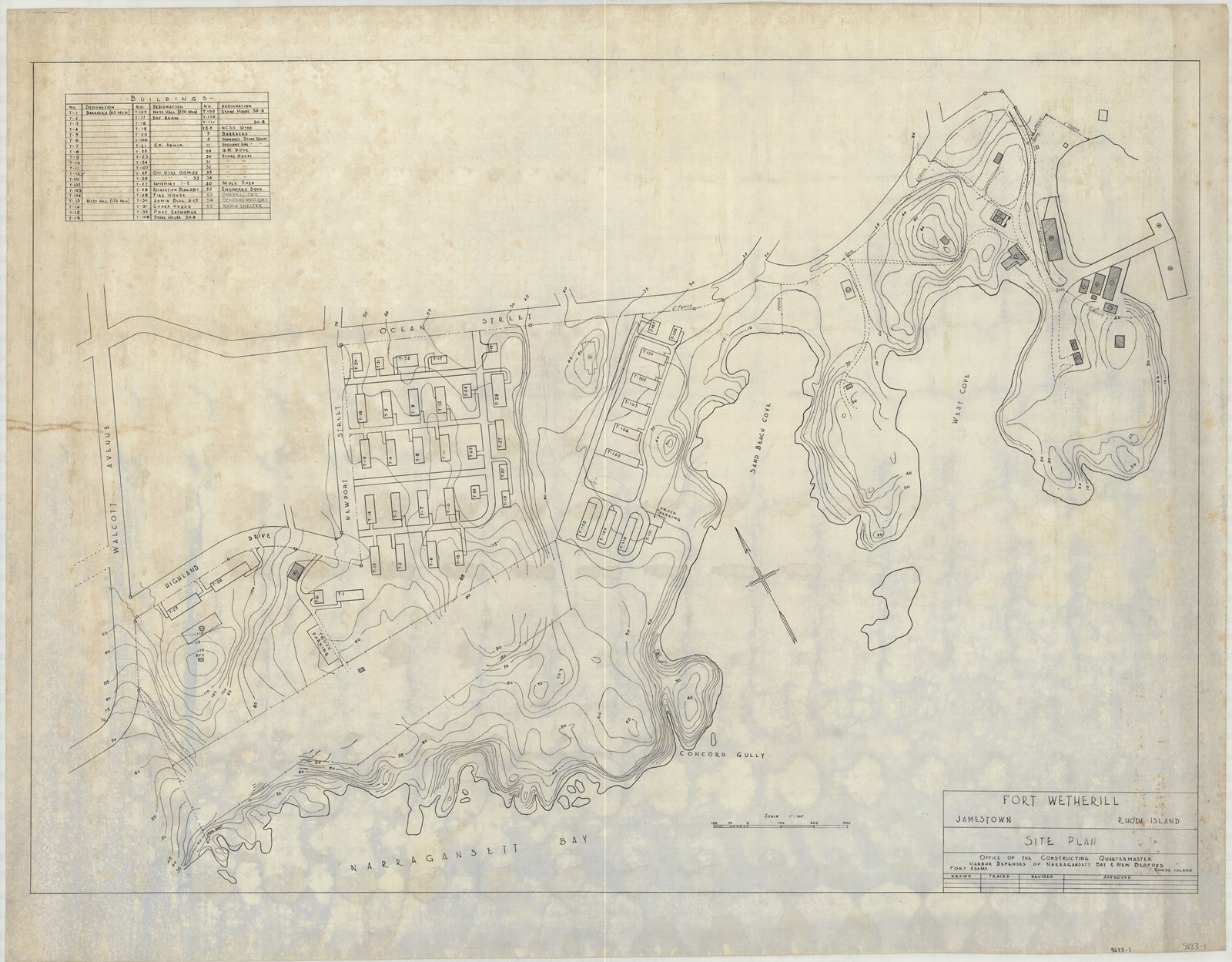Last updated: June 5, 2024
Place
Fort Wetherill

Olmsted Archives
Quick Facts
Location:
Jamestown, RI
Significance:
Olmsted Designed Landscape
Fort Wetherill would serve as a military outpost from the beginning of the Revolutionary War, to the final days of World War II. In addition to watching out for enemy ships coming through Newport Harbor, Fort Wetherill would also serve as a training camp, allowing for U.S. soldiers to practice artillery spotting, signaling, and observation.
As World War II was about to break out, new construction began at Fort Wetherill and nearby Fort Getty, with Olmsted Brothers serving as landscape architects for both projects. Many of the men stationed would care for mine fields and submarine nets between Jamestown and Newport, waiting for a war that never came.
Olmsted Brothers would work on new barracks and provide room for training, but much of what they left at Fort Wetherill was used to indoctrinate German prisoner of wars who had displayed “anti-Nazi feelings”. The goal was for to instill a desire to attain a democratic way of life back into the Germans, and pass on methods to achieve this democracy. Germans who completed the program would return home, leaders now ready to rebuild local communities.
After the threat of World War II passed, the best line of defense along the coast of New England, and the most heavily armed, was abandoned for nearly a quarter of a century. In 1970, the 61.5 acres of land Olmsted Brothers had worked on became property of the State of Rhode Island, to be used for open space and recreational uses, just as Olmsted would have wanted.
Source: "Fort Wetherill State Park," The Cultural Landscape Foundation
For more information and primary resources, please visit:
Olmsted Research Guide Online
Olmsted Archives on Flickr
As World War II was about to break out, new construction began at Fort Wetherill and nearby Fort Getty, with Olmsted Brothers serving as landscape architects for both projects. Many of the men stationed would care for mine fields and submarine nets between Jamestown and Newport, waiting for a war that never came.
Olmsted Brothers would work on new barracks and provide room for training, but much of what they left at Fort Wetherill was used to indoctrinate German prisoner of wars who had displayed “anti-Nazi feelings”. The goal was for to instill a desire to attain a democratic way of life back into the Germans, and pass on methods to achieve this democracy. Germans who completed the program would return home, leaders now ready to rebuild local communities.
After the threat of World War II passed, the best line of defense along the coast of New England, and the most heavily armed, was abandoned for nearly a quarter of a century. In 1970, the 61.5 acres of land Olmsted Brothers had worked on became property of the State of Rhode Island, to be used for open space and recreational uses, just as Olmsted would have wanted.
Source: "Fort Wetherill State Park," The Cultural Landscape Foundation
For more information and primary resources, please visit:
Olmsted Research Guide Online
Olmsted Archives on Flickr
